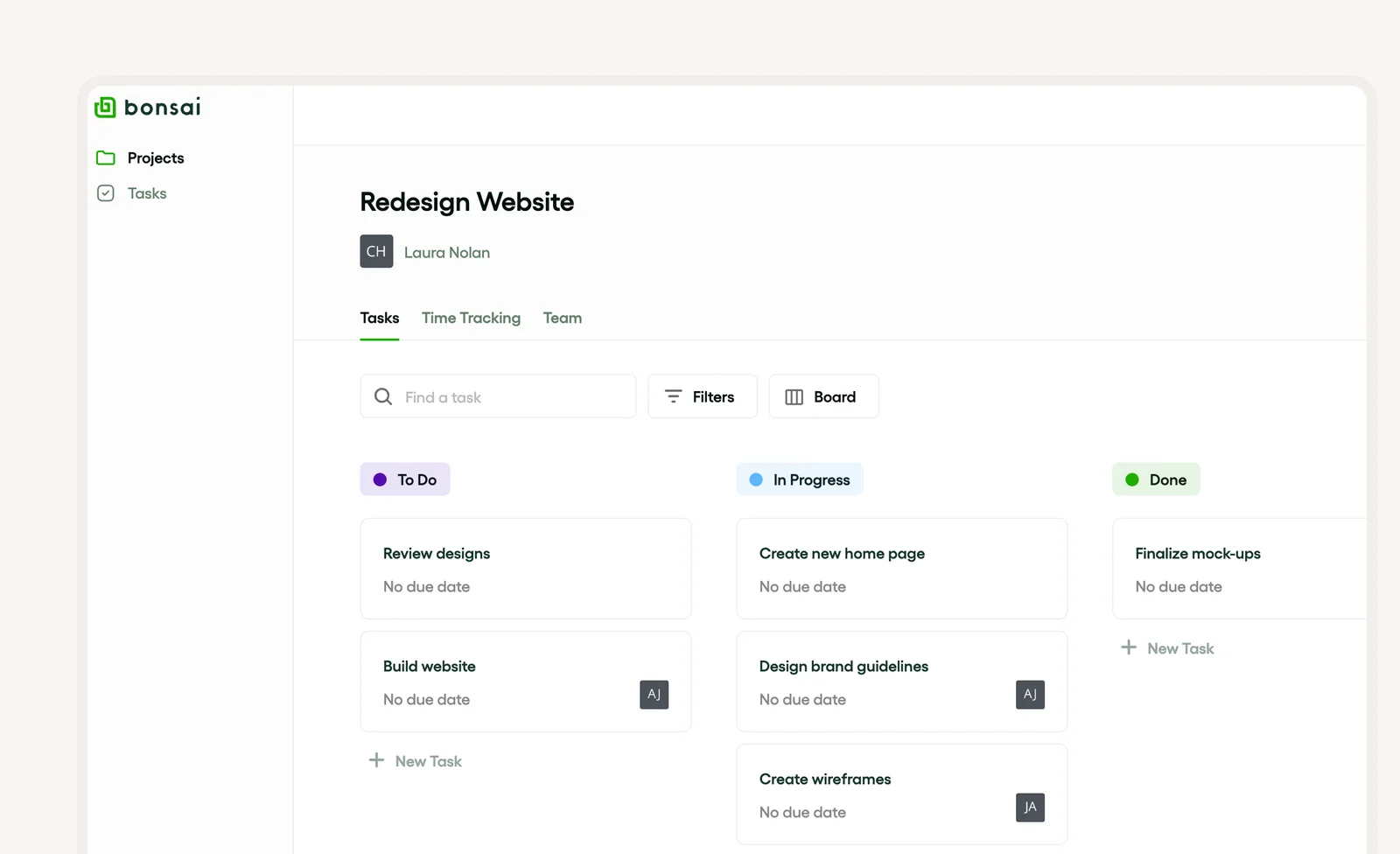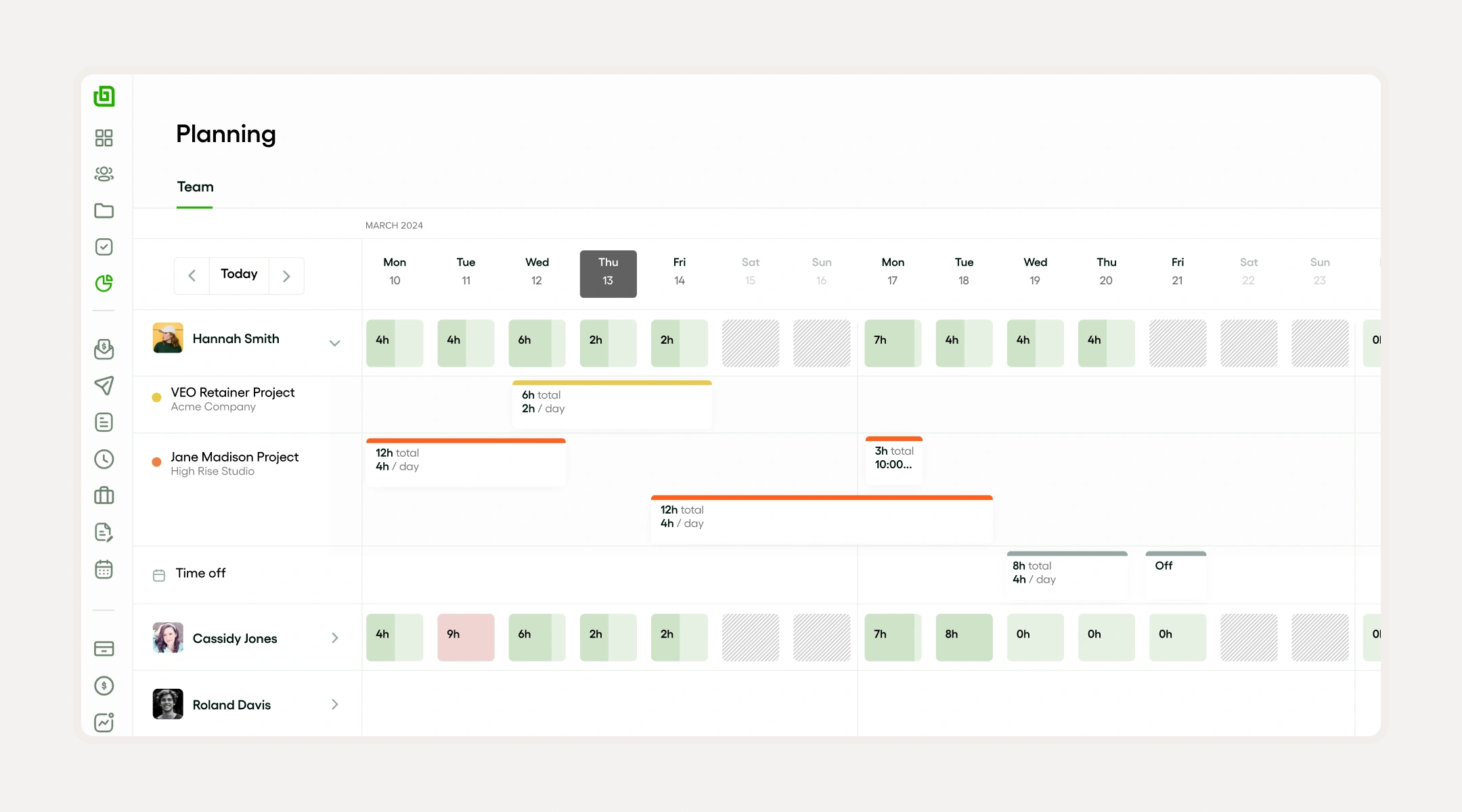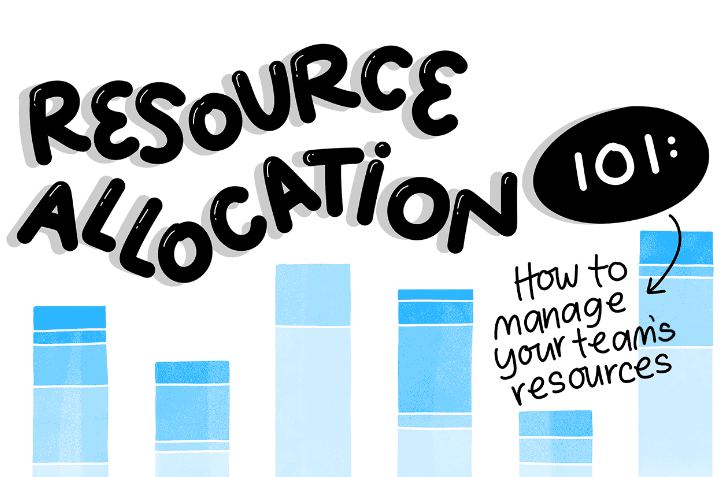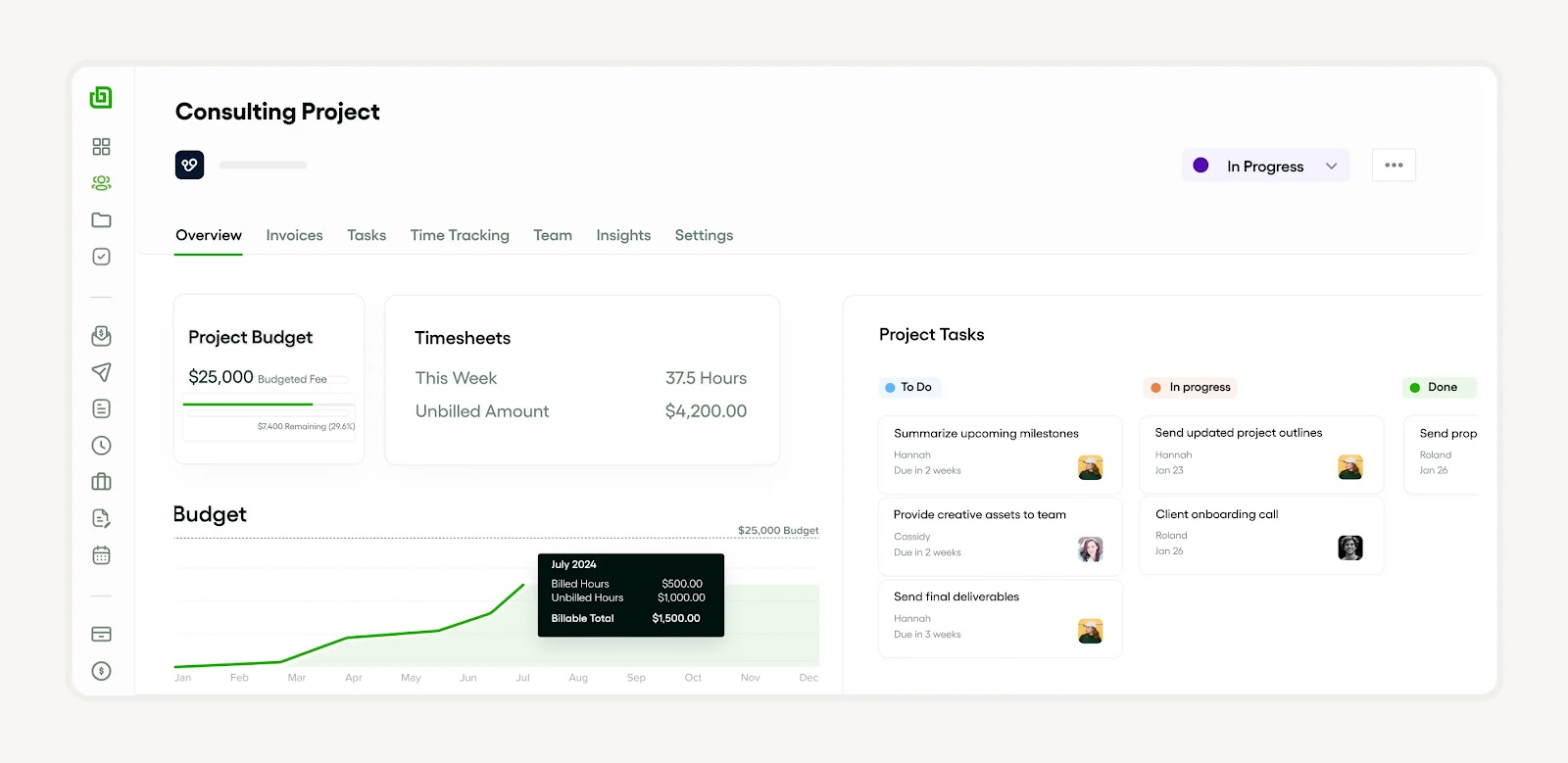Project pipeline management is a sub-process of the overall project management that is responsible for the development, execution, and delivery of the project. It entails the mapping out of a project to define goals, objectives, and strategies with regard to project concerns and project cost. A project resource scheduling tool is a system through which project managers monitor project timelines, allocate tasks, and manage outcomes. This tool is useful in the project review and the project approval where all phases are checked to have been executed based on the plan.
Introduction to project pipeline management
PPM is therefore defined as a process of synchronizing and controlling a project right from its conception, through its execution and up to its delivery. It bounds balancing of priorities, time and money, deliverables, tasks, issues, and review on projects. Because of this, a project resource scheduling tool is valuable to project managers to monitor the project and resources involved. Alongside this, it facilitates the process from project approval up to the completion of a project.
Definition and importance of project pipeline management
Project Pipeline Management can be defined as the act of addressing and assessing the present or potential projects in a portfolio. It is used in the identification of tasks, scheduling of work, control of resources, monitoring of work, and in the authorization and closure phases of the project life cycle. Here are some keywords related to Project Pipeline Management:
- Project resource scheduling tool: They assist managers in optimizing resource utilization, which facilitates the execution of projects.
- Project managers: They work in the totality of the overall project, managing project issues, and providing general leadership in the achievement of project targets.
- Project priorities: Prioritization of projects helps in the identification of those tasks that require immediate attention. Thus, it helps you to increase project efficiency.
Role of project pipeline management in agencies
In agencies, the role of Project Pipeline Management is important to achieve project efficiency. If you are a project manager, it can help with identifying project tasks, determining priorities for the project, and establishing a solid plan for project planning. The strategic sequence of project development, approval, and completion processes appears to be more cyclical. In general, it makes it easier to explain the status of the project or to consider the deliverables of the project.
However, project resource scheduling software can go a long way in improving this area. They need to provide precise information about the kinds of resources and the project cost implications. As such, handling of different project challenges becomes easier. In addition easy management of projects from the review stage up to the completion phase is easily achieved.
Maximizing productivity with Bonsai task management
Feeling overwhelmed by to-do lists and scattered tasks? Bonsai's task management features are here to transform your workday into a productivity powerhouse. Bonsai task management allows you to visually organize your tasks and priorities. This visual representation can help you quickly identify what needs to be done.
Here's how Bonsai helps you achieve more in less time:
1. Crystal-clear organization
- Centralized Hub: Bonsai consolidates tasks, projects, and deadlines into one organized space, eliminating clutter and enhancing workflow efficiency.
- Prioritization Power: Prioritize essential tasks to maintain focus and keep projects on schedule.
- Customizable Statuses: Adapt Bonsai's task statuses to mirror your project's phases, offering clarity on progress and pinpointing delays.

2. Enhanced collaboration
- Easy Task Assignment: Assign tasks to team members. It ensure clarity on roles and deadlines, promoting accountability and project efficiency.
- Smooth Communication: Effective collaboration relies on communication. Bonsai facilitates discussions and file sharing within tasks, preventing information gaps and maintaining team alignment.
- Instant Project Monitoring: Monitor project advancement in real-time with Bonsai's Kanban boards and list views, offering a transparent display of task progress and completion rates, keeping everyone updated and projects on schedule.

3. Boosting efficiency
- Automated Workflows: Repetitive tasks, say goodbye to it! With Bonsai, you can automate workflows for actions such as sending welcome emails when a project begins or creating tasks when a new contract is signed. This frees up valuable time for you and your team to focus on more strategic work.
- Integrated Timers: Easily track time spent on tasks with Bonsai's built-in timers, ensuring accurate time tracking for improved project budgeting and transparent client billing.
- Resource Management: Bonsai helps you avoid team burnout by providing visual insights into workload distribution. Strategically allocate tasks based on individual capacities, ensuring everyone is contributing effectively.

By using Bonsai's extensive task management capabilities, you can streamline your workflow, improve team collaboration, and gain valuable insights to increase productivity. This allows you and your team to accomplish more, meet deadlines, and ultimately deliver successful projects. So, say goodbye to chaos and embrace the power of Bonsai for a more organized, efficient, and productive work experience.
Key components of project pipeline management
Project pipeline management encompasses several factors that are important for the project's success. These include project planning in which the project tasks are spelled out, the determination of project priorities, and project development. Here we see the project managers dealing with aspects of the project to achieve project deliverables.
Another significant component is the project cycle. Generally, the cycle includes phases such as project authorization, implementation, assessment, and the final phase of project termination.
Project initiation
The project initiation phase can be defined as the first stage in the project lifecycle. This is a very crucial phase that entails planning your project. The project managers filter down on the project activities and use a project resource scheduling tool. It encompasses project development, goal setting, determination of project priorities, and handling project issues.
The next step sometimes includes obtaining project authorization and defining the project funding. They are used to define project deliverables and to conduct a check-up on the progress of the project. Defining the right strategies for project execution will help to move towards the project’s end in the most efficient way.
Project planning
Project planning, an effective way to establish project priorities and identify potential problems. A project resource scheduling tool can help the project manager keep track of their initiatives during different stages of a life cycle. This will ensure they take place on time.
Its highlights extend from a full-scale review of the project to getting projects sanctioned. In addition, it also focuses on the Project to be completed within budget and successful delivery. Project monitoring is key to reducing or avoiding the potential risks of going against the original plan.
The more efficiently project managers manage these steps, the better they know what is being done when it should be accomplished and which kinds of preventive measures can keep potential challenges from arising.
Project execution
The project execution phase is a vital segment in the project life cycle. Because, here the project planning translates into actual work. The project managers used a manual tracking system known as a project resource scheduling tool to track work progress and time. In this step, efforts are directed towards working on the project, monitoring its progress, and addressing the priorities of the project.

During this phase, the project may encounter some difficulties that need to be addressed and solved, or sometimes few tasks are introduced in the project plan. Before proceeding to this phase, project approval ensures that every project deliverable meets the expected quality.
Project monitoring and control
Project Monitoring and control is a significant stage in the project life cycle. This should be performed very carefully by the project managers. This stage focuses on developing the project as well as monitoring it and making sure that it is on the right track as per the project goals and objectives. They maintain checks, where they have to make certain that they are on track with the project budget and project priorities.
In this step, the project managers determine the various issues that might affect the project and how to address them. Project approval is the last stage signifying effective monitoring and control of projects.
Project closure
Once a project has been completed, the Project Managers need to move through the closing of the project phase. This phase marks the examination at the end of the project lifecycle. This is the stage of a full project review and using a resource scheduler for the Project. The goal is to make certain that project deliverables adhere to the planning and execution of a given project.

Additionally, the approval of a project is dependent on these same three considerations - along with completing hurdles overcome in developing a project for submission.
Benefits of effective project pipeline management
Project pipeline management thus facilitates efficiency in project development and delivery. They can monitor the status of their projects, accomplish some functions better and immediately change project requirements whenever something occurs. Managing the project pipeline helps in the development of a realistic work plan and the achievement of the project goals and objectives within the set time frame and cost.
Employing the project resource scheduling tool assists in defense against project challenges since it assists in identifying the right resource to assign to a particular project task. This enhances the chances of positive project review and consequently, project approval. As a result, the management of the project pipeline is critical to the successful delivery of projects’ objectives at the least cost.
Improved project visibility
An additional advantage of using a project resource scheduling tool is the increased visibility of the project. This tool enables the project managers to have a comprehensive view of the project life cycle. It helps to streamline the project planning process, project development, and project execution. It also enables managers to effectively track project tasks and their progress.
Thanks to increased transparency, there are opportunities to evaluate and, if necessary, make changes for the projects’ end. It also enhances efficiency in project approval as well as project budgets and timely handling of issues within projects. This way, different project requirements, and goals become prioritized and met as planned.
Enhanced resource allocation
Proper resource allocation is important in the entire project lifecycle as it ensures that a project succeeds right from the start to completion. For starters, some of the duties project managers should follow consist of, Project Planning Defining Projects and Setting Time Lines Prioritising. They also need to perform project surveillance and handle any obstacles in the way of projects.
However, you can easily get these done in a project resource scheduling tool. It's a matter of fact that, this makes things convenient and productive. This automated software helps in managing the budget of the project, plus keeping a check on development and proper execution.
Increased efficiency and productivity
A project resource scheduling tool can greatly increase efficiency and productivity in a project lifecycle. It helps project managers to ensure that tasks in a given project are properly assigned and supervised. Moreover, it also allows for facilitating planning as well as analysis of the proper execution and development of projects.
This way, the problem can be addressed in real-time, and also great for setting project priorities correctly. With this, you can ensure projects are completed on time. Additionally, this is an imperative tool in keeping the project on budget.
Challenges in project pipeline management
Project Pipeline Management has some issues. A common challenge that project managers experience is how to manage the project life cycle effectively. In the planning stage, the challenges are different from those of the executing stage and even different from those of the closing stage.
Another typical issue is the distribution and accounting of resources where a project resource scheduling tool is typically required. Additionally, handling project budgets and defining project tasks based on business goals and objectives is yet another challenge researchers acknowledge. Last but not least, it may also not be easy to conduct an efficient project review and gain project approval due to various challenges associated with project development.
Managing multiple projects simultaneously
Project managers often struggle to manage many different projects at one time. This requires project planning, task optimization, and a powerful resource scheduling tool. They must work their way through the project lifecycle, starting from project inception and ending in successful completion.
It just requires looking after the project budget and monitoring diligently how quickly or slowly a project is progressing. This process consists of project review at regular intervals, removing the challenges faced by a project & making sure everything is deliverable in terms of projects. It is significant to note that better prioritization of projects results in better project execution.
Resource allocation and scheduling
Resource management and scheduling have a significant impact on the overall project. Resource allocation means distributing the available resources so that they are in accordance with their requirement for the completion of various tasks. Additionally, scheduling ensures these resources are employed at the appropriate time across the project lifecycle.

Project managers can use project resource scheduling software to make things easier. Alongside this, they can track the progress of a project as well as smoothly address any challenges associated with it. With this tool project priorities can be established and reevaluated as needed during project development, project review, and project completion.
Ensuring quality and compliance
Quality and compliance are important throughout the whole project life cycle and have an impact on the planning, execution, and closing stages. Proficient project managers must ensure standards are achieved by obliging the rules of the project review for the project sanction and confirming that tasks correspond to the priorities of the project.
This can be done through an efficient project resource scheduler that assists in managing the project budget while tracking project milestones.
Essential tips for effective project pipeline management
A firm understanding of the basic aspects of project development, project planning, and project implementation is crucial for effective pipeline management. If you are a project manager, it's essential to have a documented project lifecycle to provide a structure for managing projects. Employ a project resource scheduling tool to determine priorities of certain project activities and also as a means of tracking progress. This will go a long way in ensuring that costs remain within the project cost plan.
Finally, the need for project challenges should also not be overlooked. By creating time to review projects with the team, such risks can be foreseen at an early. Moreover, positive corrective measures in line with the project goals can be taken.
Establish clear goals and objectives
It is important to know that the key concern of the project managers is to oversee all the phases of the project life cycle. Goals include:
- Strategies that a project needs to undertake in order to avoid falling into project pitfalls.
- Project review and approval at a set interval to help monitor the project.
- Ensuring rigorous adherence to project activities for optimum and effective project delivery.
Implement a robust project management system
An Effective project management system is needed for proper control right from the start to the end of projects. The primary components include project planning, implementation and a regular schedule of reviewing of projects. This way you can make sure that all program deliverables are being delivered in agreement with estimated priorities on time for timely completion. Inarguably, project resource scheduling has to be provided as an open device in the process of dealing with projects. In part, this tool helps track project completion and also makes sure the budget does not go over. It is also used to monitor project targets made during a project life cycle.
Regular monitoring and evaluation
Regular Monitoring and Evaluation is required across the project lifecycle to ensure that there are alignments between project planning and its progress. Even for project managers, tools such as a project resource scheduling tool or others speak to their role in managing the various components of their projects. The reason for this is they need to ensure that every aspect is planned and executed correctly-taken into consideration all aspects at once.
Project review & approval stages need frequent evaluation with defined milestones to support the development to a finish line. Key project deliverables act as indices for judging the success at different stages.
Effective communication and collaboration
Coordination and cooperation are the key elements in project management. This involves the use of a project resource scheduling tool which helps project managers in planning, executing and reviewing projects. This makes it possible for project managers to monitor the overall development of the project, individual project tasks and important project milestones.

Further, it offers clarity on the project approval process, and the project budget and assists in overcoming challenges within the project. In the long run, this helps in the right project development and matching with the priorities needed for completing the projects successfully.
Role of project management software in pipeline management
Pipeline management is central to Project Management Software at every stage of the project development process. It assists project managers in project scheduling, project design, and project implementation, at the same time monitoring project objectives and project costs. These tools automate project resource scheduling and assist with handling project difficulties. In addition, it enhances the management of project progress from the approval stage to the completion stage, making it effective and efficient. It enables basic project access to deliverables; project tasks; and a platform for comprehensive project assessment. Undoubtedly, the software eases management making it an ideal tool in today’s world business.
Features of project management software
Project management software is an important software tool used by project managers in project planning, project development and project implementation. Some of them include an integrated project resource scheduling that assists in organizing and management of project tasks. This helps in identifying project objectives, allocating resources for projects, and managing project risks suitably. Also, it helps in tracking the progress of projects, thus availing the project deliverables within the expected project life cycle. Other core components are project review mechanisms, project approval functionalities, and project status tracker.
Benefits of using project management software
Project Management Software is compulsory in project planning, project execution, and project closing. This has a number of advantages for project managers and teams. It can be used as an efficient and dependable project resource scheduling tool in project management activities to coordinate tasks, timelines, and resources in a project.
It offers an increased visibility of the project and the project budget. It assists in synchronizing the project goals and objectives, thus reducing the number of project issues. Furthermore, it helps in project development, project review, and project approval.
Top project management software for agencies
However, agencies must also be equipped with the best software to carry out project management effectively. Key aspects of the project life cycle, having a well-developed project and a clear budget are significant focuses. That is where a wide-ranging project resource scheduling tool becomes essential. These tools help the project managers in Project Planning and project Execution and are handy for closing the Projects.
It also helps you to establish priorities in the project, solve any problems encountered by a specific project and track the progress of their projects. A Good project management software will also help you easily review your projects, approve these before moving onto the next stage of a process and speed up delivery with deadlines, tasks, or deliverables. Hence, opting for this software is beneficial in organizing everything and attaining higher productivity rates.
Bonsai
Bonsai is considered one of the best project management software for agencies, consultants, and service providers. The amazing thing about Bonsai is its inclusive range of tools that cover the diverse aspects of project management. It is an essential tool in enhancing the efficiency of the management of projects through effective planning, scheduling of tasks, and organization of resources.

- It offers basic project overviews for monitoring and scheduling to ensure that projects remain updated and up to date.
- The software shows outstanding performance where members can be invited, tasks created, due dates decided, and progress tracked easily.
- With Bonsai resource management is made easier, whereby each and every component of a project is provided with the necessary resources it requires to function effectively.
- Overall, you would like how Bonsai handles the workload and its forecast, as it provides insight and control over the tasks.
- This is particularly important since the application tracks time to the last detail, thus making billing and productivity assessment more accurate.
All in all, Bonsai is an ideal project management tool for agencies, consultants, and service providers that are in need of a powerful, intuitive, and functional tool. Due to its ability to improve efficiency and productivity, it is a crucial tool for users that seek to achieve high levels of project performance.
Microsoft Project
Microsoft Project is an effective scheduling tool employed by project managers to schedule project resources, implement projects, and manage project development. More so, it helps in the ease of task assignment and time taken in the achievement of the project goals within the set project budget.

During the project implementation process, Microsoft Project shows the project frequency and the actual and projected project completion.
Asana
Project managers who work in project development, project planning, and project execution cannot afford to be without Asana. It provides you with broad functionality that can contribute to project monitoring, identifying the various tasks under the project, and responding to various project issues. This makes it the best tool when it comes to organizing the schedule of a project.
Hence, by using Asana, members of your teams can work in harmony together in the completion of the projects.
Trello
Trello is another popular project resource scheduling tool among project managers across the globe. Thus, during the project lifecycle, it contributes to project planning, project development, project execution and the final stages of project completion by managing project tasks. This makes it easy for the project team to understand the current status of the project, how priorities are handled, and how to deal with challenges that may arise in the execution of the project.
In addition to the features that help everyone stay on track with the project deadlines and responsibilities, Trello has the project review and project approval features.
Conclusion: The future of project pipeline management
The future of project pipeline management can be expanded by implementing the capabilities of project resource scheduling tools. Fair to say that, this allows project managers to actually see in real-time the entire lifecycle of a project, helping better planning and increased execution as well as increasing the total productivity of projects.
It can also help in improved project budget allocation, prioritizing projects and dealing with the challenges. In addition, it reduces the time taken for project review and approval to ensure early completion of a project.
In the end what matters is that good project management will always come down to having good communication.







